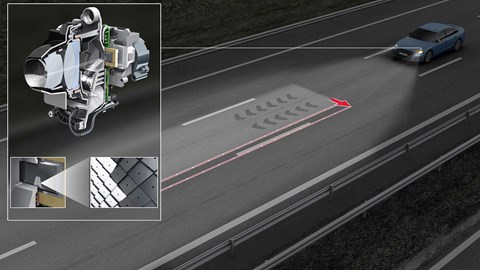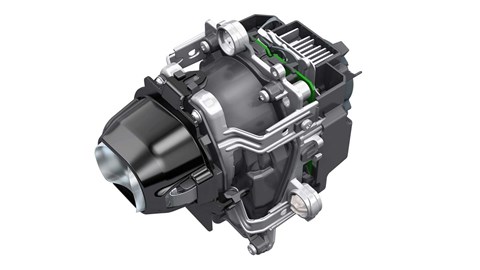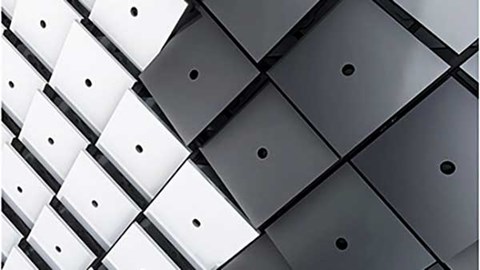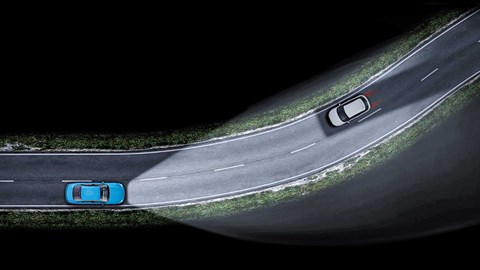Two lines of arrowheads are superimposed atop the motorway tarmac, pointing the way through the darkness for Audi’s revamped A8. Light isn’t leaking indiscriminately sideways but is focused on my chosen path – until I tap the indicator. Smoothly the rectangle of light projected forward switches through 90˚ to cover the lane I’m moving into, then switches back again to extend forward illumination.
Welcome to ‘directional lane light’, one of several groundbreaking lamp features introduced by the latest A8 (priced from £75,035), where new matrix LED headlamps crucially incorporate a digital micromirror device (DMD).
LEDs to laser lights: our guide to car headlamp tech
This DMD technology, used for video projectors in cinemas, incorporates 1.3 million micromirrors, each a few thousandths of a millimetre long. Chip controlled using data from the A8’s camera and sensors, each of the tiny mirrors’ angles can be adjusted up to 5000 times a second. As a result, the pixels of light can be masked or shone in a vast array of directions. Audi says lamps no longer generate a static beam but act like a continuously regenerating digital image.
Tech that automatically dips headlights for oncoming traffic is familiar, but the A8 noticeably takes it to the next level. Driving along the A127, light areas constantly blip on and off as oncoming cars pass to the side. Its distance is prodigious too, unfurling down the road. On unlit stretches, it feels like driving along a tunnel of light – except for the rear screens of cars ahead, which remain in pitch black, shielded from the all-encompassing light that’s also helping to light their way.

The A8 is the first Audi with digitised lamps front and rear (the back OLED graphics fan out like a peacock’s tail if a trailing car threatens a rear-ender). There’s a clear safety intent to all this, which is exacerbated by the micromirrors’ other features: vulnerable pedestrians can be emphasised in a shaft of light, or a hazard warning sign flashed on the ground for three seconds if map data suggests a stranded car up ahead.
There are cosmetic features too, including fancy projections as the driver switches the car on and off. It’s all part of a trend where lights will be used increasingly to communicate with other road users.
Does it work?
Absolutely. Much of the light choreography is stunning, and the way it reacts to the surroundings is helpful and very impressive. Not sure we need arrows to show the way forward, though.
Micromirror lamp: how it works
Plug into the matrix

All UK A8s get these digital matrix LED headlights. Backed by mighty processing power, their vast capabilities come from the 1.3 million micromirrors at their core
On reflection

Exerting an electrostatic field on the tiny mirrors shifts their position, up to a mind-boggling 5000 times per second. This enables a near-infinite array of light patterns
The light fantastic

The A8 is constantly switching light areas on and off to respond to its surroundings. It can also project graphical info such as directional arrows or hazard warnings too
More automotive tech news stories by CAR magazine